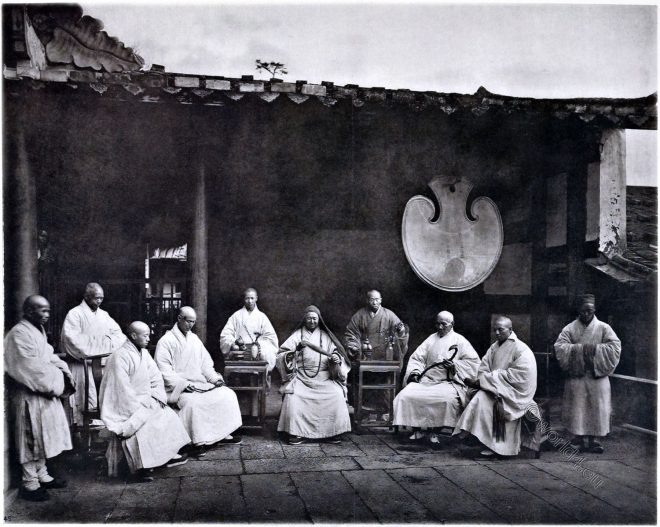In ancient Rome, Pontifex Maximus was the title given to the high priest or chief priest at the head of the Pontifical College of Priests.
Category: Ecclesiastical
Ecclesiastical dresses and antiques. Medieval, Byzantine.
Costumes of the spiritual orders. 10th to 18th century.
Monastic habit of spiritual orders from Poland, Germany and Flanders from the 10th to the 18th century.
Types of nuns. Habit of different orders. Ecclesiastical Monastic orders.
Female religious habit at the end of the eighteenth century. Nuns who live according to the Rule of St. Augustine, St. Dominic, St. Benedict and of Saint Angela Merici.
The Abbot and Monks of Kushan Monastery about 1870.
The similarity between the Buddhist faith and the Roman Catholic churches may be traced even more minutely than this. “Buddhists everywhere have their monasteries and nunneries, their baptism, celibacy and tonsure, their rosaries, chaplets, relics, and charms, their fast-days and processions, their confessions, mass, requiems, and litanies, and, especially in Tibet, even their cardinals, and their pope.”
Taoist protective formulas against house fires.
Taoist priests use colored charms and rituals to protect and cleanse homes from fire, invoking the God of Fire.
Tolling of Buddhist Bells and the series of 108 strokes.
Monks in Buddhist monasteries toll bells 108 times daily, symbolizing the Chinese year and believed to soothe souls.
Persian characters at the end of the 19th century. Travel to Iran.
Golnabat Khanoum (Mrs. Sugar-candi) of the Susmani tribe.
The warlike women in Asia Minor. Assyrian Garments and Dresses.
Garments and Dresses of the most sporting women of antiquity. Warlike women in Asia Minor.
ICONS. THE VLADIMIR MADONNA.
Note on the Vladimir Madonna, Vladimirskaya.- Note on the St Alexis Icon. By Robert Steele, Leonard Wharton.
Roman Pope in chamber clothes 18th c.
Roman Pope in Chamber Clothes









